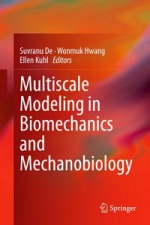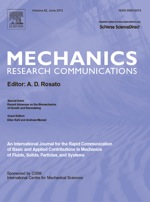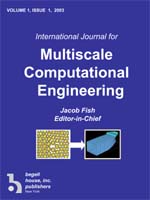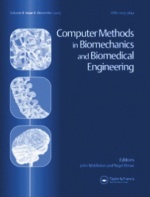(→cardiovascular tissue engineering) |
(→computer models in biomechanics: from nano to macro) |
||
| Line 209: | Line 209: | ||
[http://iutam.stanford.edu/speaker.html invited speakers] <br> | [http://iutam.stanford.edu/speaker.html invited speakers] <br> | ||
| − | |||
| − | |||
| − | |||
==kuhl lab @summerschool in graz 2012== | ==kuhl lab @summerschool in graz 2012== | ||
Revision as of 17:53, 6 June 2015
welcome the new equipment in the cool lab!
... including sandra's new rule: people crawling under the foosball table

| 
| 
| 
|

| 
| 
| 
|

| 
| 
| 
|

| 
| 
| 
|

| 
| 
| 
|

| 
| 
| 
|
multiscale modeling in biomechanics and mechanobiology
|
multiscale modeling in biomechanics and mechanobiology contributions by |
growing matter
|
special issue on growing matter contributions by |
computer models in biomechanics: from nano to macro
|
computer models in biomechanics: from nano to macro contributions by |
biomechanics of growth and remodeling
|
special issue on advances on the biomechanics of growth and remodeling contributions by |
active tissue modeling: from cells to muscle
|
special issue on active tissue modeling: contributions by |
computer simulations of mechanobiology
|
special issue on computer simulations of mechanobiology contributions by |
mechanics in biology: cells and tissue
|
theme issue on
mechanics in biology: cells and tissue contributions by |
mona's persian dinner
05/27/15 celebrating adrian's faculty position and mona's and maria's dare fellowship

ali, alex, celine, henry, hyder, james, rijk, alejandrina, maria, francisco, johannes, maria, ellen, adrian, mona
alex' favorite lab meeting
09/01/14 kuhl lab meeting, stanford

nithya, maria, katrina, mona, timi, ellen... and alex
manu's phd bbq
05/02/13 lake lagunita, stanford

hardik, maurizio, martin, ivan, beth, adrian, alex, andreas, sam, ellen, lik chuan, henry, christian, david, yanli, madeleine, maria, celine, manu, jan, silvi, katrina
computer models in biomechanics: from nano to macro
iutam symposium on computer models in biomechanics
08/29/11-09/02/11, stanford university, california
ellen kuhl,
gerhard holzapfel

kuhl lab @summerschool in graz 2012
09/03/12-09/07/12 modeling and simulation in soft tissue biomechanics, graz, austria

johannes, adrian, ellen, alex, maria, daniel, alain, manu
kuhl lab @amse summer bioengineering conference 2012
06/20/12-06/23/12 asme summer bioengineering conference,
fajardo, puerto rico

jon, adrian, manu, ellen, alex
kuhl lab @amse summer bioengineering conference 2011
06/22/11-06/25/11 asme summer bioengineering conference,
farmington, pennsylvania

manu, ellen, alex, the eagle, tyler, corey
kuhl lab @serdar goodbye party #42

wolf, dominique, anna, john, madeleine, manu, ellen, serdar, oscar, alkis, johnathan, uwe, anton, kitch, poornima
mathematics of growth & remodeling of soft biological tissues
miniworkshop
mathematisches forschungsinstitut oberwolfach
08/31/08-09/06/08, oberwolfach, germany, report (download)
ellen kuhl,
davide ambrosi,
krishna garikipati

back
antonio di carlo,
isaac vikram chenchiah,
anders klarbring,
ellen kuhl,
krishna garikipati,
andreas menzel,
harish narayanan,
paolo podio-giudugli,
angela stevens,
patrick shipman,
martine ben amar.
italian front
guido vitale,
davide ambrosi,
alfio grillo,
luigi preziosi.
cardiovascular tissue engineering
group retreat
cardiovascular tissue engineering
07/11/08-07/13/08, asilomar

back
gadryn higgs, serdar goktepe, chris zarins, joe wu, beth pruitt, erin murphy, ellen kuhl, sarah heilshorn, ginel hill, ahmed assar.
font
franklin jia, joe ulerich, jonathan wong, rebecca taylor, chelsey simmons, james norman,
jin yu, cheryl wong po foo.
computational mechanics of electro-active materials
minisymposium
wccm/apcom2010
07/19/10-07/23/10, sydney, australia
serdar goktepe, andreas menzel, ellen kuhl
abstract this mini-symposium aims to bring together researchers from different sub-disciplines of computational engineering sciences by providing a common discussion platform for exchanging ideas on the latest developments in the computational mechanics of electro-active materials. the phrase electro-active material refers to a broad class of materials that actively responds to an externally applied or intrinsically generated electric field by undergoing remarkable deformations. similarly, they might also generate an electric activity when subjected to mechanical loading. electro-active materials are not restricted to man-made products such as piezoelectrics, ferroelectrics, dielectric polymers but also cover a wide range of bio-materials such as cardiac tissue or skeletal muscle. synthetically produced electro-active materials have a wide spectrum of applications such as high-tech devices, bio-medical products, or artificial muscles. the optimal design and successful manufacture of these synthetic materials invariably necessitate accompanying quantitative computational analyses of the products that commonly possess complex geometries. the computational modeling of electro-active biological tissue, on the other hand, plays a key role in guiding patient-specific therapies such as surgical operations, novel stem cell-based treatments of infarcted cardiac tissue when the experimental techniques fall short. advances in computational modeling of these seemingly distinct classes of materials can, of course, mutually and positively influence each other towards the development of artificial organs and design of bio-inspired functionally-optimized high-tech devices.
active tissue modeling - from single muscle cells to muscular contraction
minisymposium
10th usnccm
07/16/07-07/19/07, columbus, ohio, usa
markus bol,
ellen kuhl
abstract all living creatures share a common architectural feature: the cell. this functional unit is the root of all life. muscle cells can be found in smooth muscles which are concerned with the movements of internal organs as well as in skeletal muscles which contribute to the locomotion of creatures. cells undergo and control a lot of intra- and extracellular events with distinct mechanical characteristics to perform various functions. however, there are a lot of questions concerning the mechanical characteristics of muscle cells and the biological connection between the cells at the micro level and the muscles at the macro level. the aim of this mini-symposium is to bridge the gap between cell mechanics and the modelling of locomotor/movement systems as well as contraction processes in general. it is well-known that today’s computational tools are indispensable to augment experimental techniques for a deeper under¬standing of soft tissues like skeletal or smooth muscles. computational biomechanics may increase success rates of clinical interventions and therapeutic effectiveness which is also of great socio-economical interest. active biological tissues are characterised by a huge spectrum of very complex properties such as anisotropy, damage, growth and their ability to undergo large deformations. many of these aspects are not captured sufficiently in material models and computational methods. to advance the aforementioned it is necessary to bring together in this minisymposium scientists and bioengineers in the areas of computational mechanics and especially experimental techniques and procedures.
multiscale modeling of materials
minisymposium
9th usnccm
07/23/07-07/26/07, san francisco, usa
ellen kuhl,
ekkehard ramm
abstract multiscale modeling of materials has advanced to a research topic of growing interested in the past decades. This trend is driven by the desire to characterize the material behavior, in particular in the context of material failure, as accurately as possible by looking at the characteristic substructure of the material on smaller scales. a typical example are granular media which can be described through phenomenological continuum theories on the macroscopic level while discrete particle interaction theories provide further insight in their complex failure phenomena on the microscopic level. bridging the gap between the different scales is one of the most challenging problems in multiscale modeling. from a computational point of view, this task can be accomplished in two different ways: the individual scales can either be coupled horizontally or vertically. In the former approach, which could be thought of as a kind of model adaptivity, the material characterization is refined in regions of particular interest, e.g. in potential failure zones, while the remaining part of the structure is still modeled on the phenomenological level. the vertical coupling approach is maybe more common in material modeling. while continuum-based strategies like the finite element method can be applied to simulate the material behavior on the macroscopic scale, discrete element techniques, particle methods or dislocation dynamics are typically applied to characterize the material response on the microscopic scale. the vertical coupling thus essentially aims at defining appropriate analytical or numerical homogenization techniques to carry discrete microscopic information up to the macroscopic phenomenological level. within this mini-symposium, we encourage abstracts related to the following key issues: micromechanically motivated constitutive models, higher order continuum theories, discrete element simulations of different failure phenomena, enhanced finite element techniques to simulate overall structural failure, multifield aspects of material failure, model adaptivity, computational homogenization techniques, and experimental validation and parameter identification.
computational methods in biological growth and remodeling
minisymposium
9th usnccm
07/23/07-07/26/07, san francisco, usa
ellen kuhl,
krishna garikipati
abstract this symposium will focus on theoretical and computational methods for mass and volumetric change (growth) and microstructural changes (remodeling) in biomechanical problems. over the past two decades, a number of theoretical approaches have been laid down to explain functional adaptation of biological tissues. Included among them are the classical theory of adaptive elasticity, open system thermodynamics, reaction diffusion in porous media, mixture theories and different theories of microstructural evolution. within this minisymposium, we would like to turn the focus somewhat to the challenges related to the computational realization of these theories, while still recognizing the need for continued theoretical development. with these aims in mind, we invite abstracts addressing (but not necessarily restricted to) the following topics of relevance to biological growth and remodeling: further development of growth and remodeling theories, algorithms for multifield phenomena of mechanics, transport and reaction, appropriate formulation and time discretization of biological rate equations, computational treatment of scale interaction in space and time, the role of computational homogenization techniques, and relaxation methods in microstructural evolution.
spaghetti towers @stanford
some impressions of stanford's class of 2020 during stanford's society of women engineers' exploring new worlds spaghetti tower building contest,
more pics spaghetti towers 01, spaghetti towers 02

| 
| 
| 
|
conferences & travel
08/24/15-08/28/15 summer school on topics in cardiac modeling and simulation, lugano, switzerland
07/26/15-07/30/15 13th usnccm san diego, california
07/06/15-07/10/15 9th european solid mechanics conference, madrid, spain
11/03/14-11/07/14 axonal transport and neuronal mechanics, ohio
10/13/14-10/15/14 computer methods in biomech & biomed engineering, amsterdam, netherlands
07/20/14-07/25/14 11th world congress on computational mechanics, barcelona, spain
06/04/14-06/06/14 instabilities across the scales, cachan, france
04/21/14-04/25/14 midwest mechanics seminar II, purdue, illinois, iit, iowa state, minnesota
03/23/14-03/25/14 engineering and the future of health care, washington, dc
03/10/14-03/14/14 gamm 2014, erlangen, germany
02/13/14-02/14/14 multiscale methods and validation in medicine and biology, berkeley, california
01/27/14-01/31/14 midwest mechanics seminar I, mich, mich state, notre dame, n-western, wisconsin
01/13/14-01/14/14 second oxford brain mechanics workshop, oxford, uk
10/16/13-10/17/13 simulia user meeting, santa clara, california
09/25/13-09/28/13 bmes annual meeting, seattle, washington
09/03/13-09/05/13 current challenges in computing, napa, california
07/22/13-07/25/13 12th usnccm, raleigh, north carolina, usa
05/22/13-05/24/13 euromech frontiers in finite deformation electromechanics, dortmund, germany
05/21/13-05/24/13 simulia community conference, vienna, austria
04/03/13-04/07/13 computer methods in biomech & biomed engineering, salt lake city, utah
12/09/12-12/11/12 4th annual int conf in computational surgery, boston, ma
09/03/12-09/07/12 modeling and simulation in soft tissue biomechanics, graz, austria
07/09/12-07/13/12 european solid mechanics conference, graz, austria
07/02/12-07/05/12 efficient solvers in biomedical application, graz, austria
06/20/12-06/23/12 asme summer bioengineering conference, fajardo, puerto rico
03/26/12-03/30/12 gamm 2012, darmstadt, germany
02/13/12-02/14/12 multiscale methods and validation in medicine and biology, san francisco, california
08/29/11-09/02/11 iutam symposium on computer models in biomechanics, stanford, california
07/25/11-07/29/11 11th usnccm,
minneapolis, minnesota
06/22/11-06/25/11 asme summer bioengineering conference,
farmington, pennsylvania
04/18/11-04/21/11 gamm 2011,
graz, austria
10/06/10-10/09/10 bmes 2010,
austin, texas
09/26/10-10/01/10 birm mathematical foundation of mechanical biology,
banff, canada
07/19/10-07/23/10 wccm/apcom2010,
sydney, australia
06/27/10-07/02/10 16th usnctam,
state college, pennsylvania
06/23/10-06/25/10 modern trends in geomechanics II,
stanford, california
03/22/10-03/26/10 gamm 2010,
karlsruhe, germany
01/27/10-01/28/10 modeling biological materials,
college station, texas
10/06/09-10/13/09 erlangen, germany
09/02/09-09/04/09 complas x,
barcelona, spain
07/16/09-07/19/09 10th usnccm,
columbus, ohio
06/17/09-06/21/09 asme summer bioengineering conference, lake tahoe, california
08/31/08-09/06/08 mathematics of growth & remodeling,
miniworkshop, oberwolfach, germany
08/24/08-08/30/08 ictam 2008,
adelaide, australia
06/25/08-06/29/08 asme summer bioengineering conference,
marco island, florida
06/18/08-06/21/08 iutam symposium biomechanics,
woods hole, massachusetts
03/02/08-03/05/08 orthopaedic research society,
54th annual meeting, san francisco, california
09/20/07-09/21/07 growth in the desert,
workshop, tucson, arizona
07/23/07-07/26/07 9th usnccm,
san francisco, california
07/16/07-07/20/07 iciam 07,
zurich, switzerland
07/02/07-07/05/07 instabilities across the scales,
delft, the netherlands
06/20/07-06/24/07 asme summer bioengineering conference,
keystone, colorado






